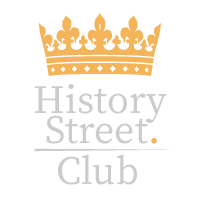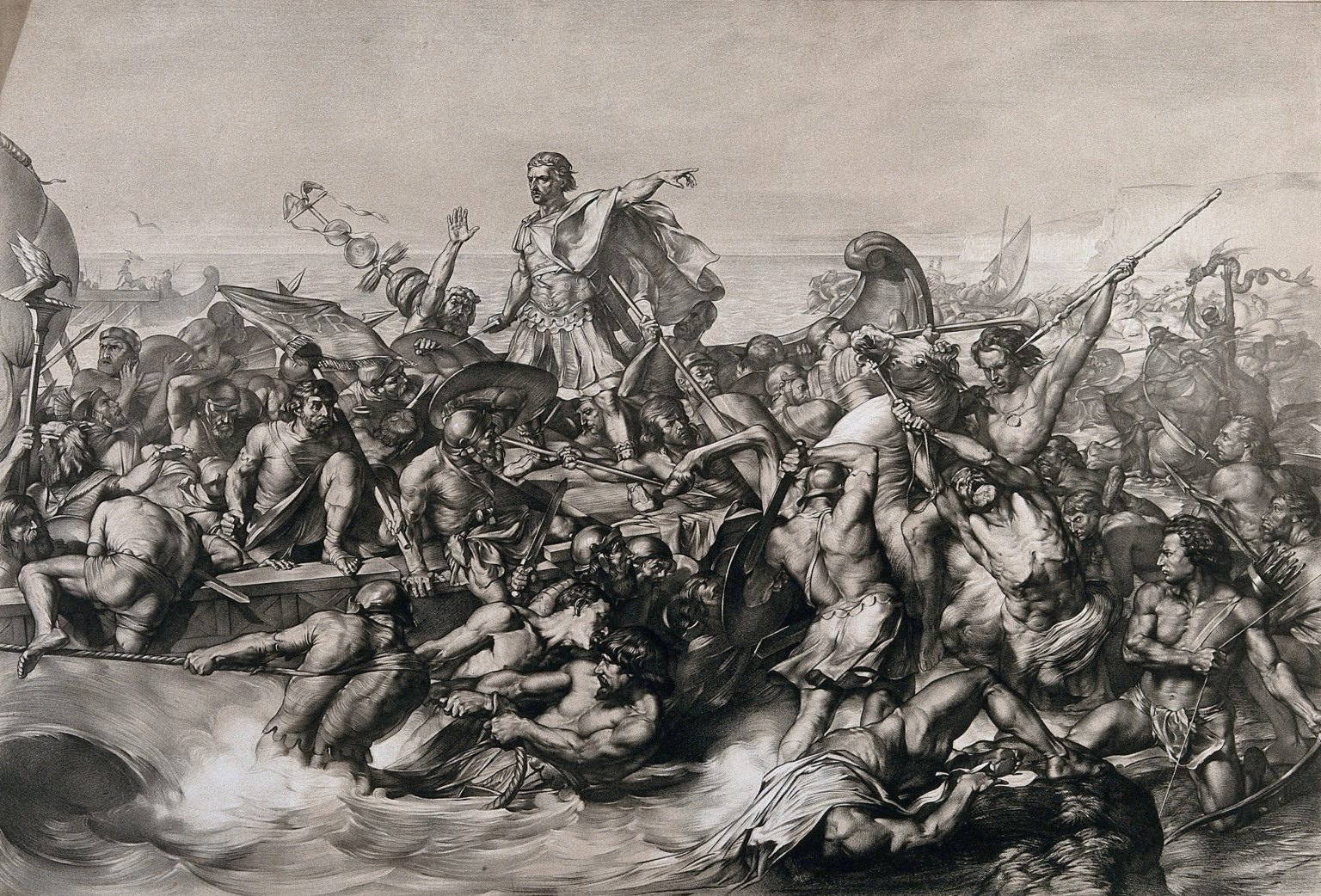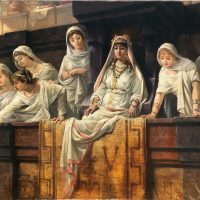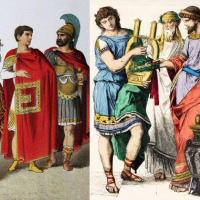The Roman Occupation of Britain, spanning from 43 AD to 410 AD, is a pivotal chapter in the annals of history. This era, marked by conquest, integration, and cultural exchange, saw the mighty Roman Empire extend its reach to the misty shores of Britain. But what did this occupation mean for the Romans and the native Celtic Britons? Let’s embark on a journey through time, exploring the contrasting perspectives of these two civilizations.
The Roman Occupation of Britain from Roman Perspective: Civilizing a Barbaric Land
From the Roman viewpoint, Britain was a land shrouded in mystery, inhabited by tribes that were seen as barbaric and uncivilized. The Romans, with their advanced infrastructure, legal systems, and cultural achievements, believed they were bringing civilization to these distant isles.
Advantages of this perspective include the undeniable advancements the Romans introduced to Britain. They constructed roads, which are still in use today, built towns, and introduced the Britons to new architectural techniques. The Roman baths, villas, and the Hadrian’s Wall stand testament to their engineering prowess. Moreover, the introduction of Latin, the Roman language, facilitated trade and communication.
However, the challenges were manifold. The diverse tribes of Britain didn’t always welcome Roman rule. Frequent uprisings, like the famous revolt led by Boudicca, Queen of the Iceni, highlighted the resistance the Romans faced. Additionally, maintaining control over such a vast territory, far from the heart of the empire, was logistically challenging and resource-intensive.
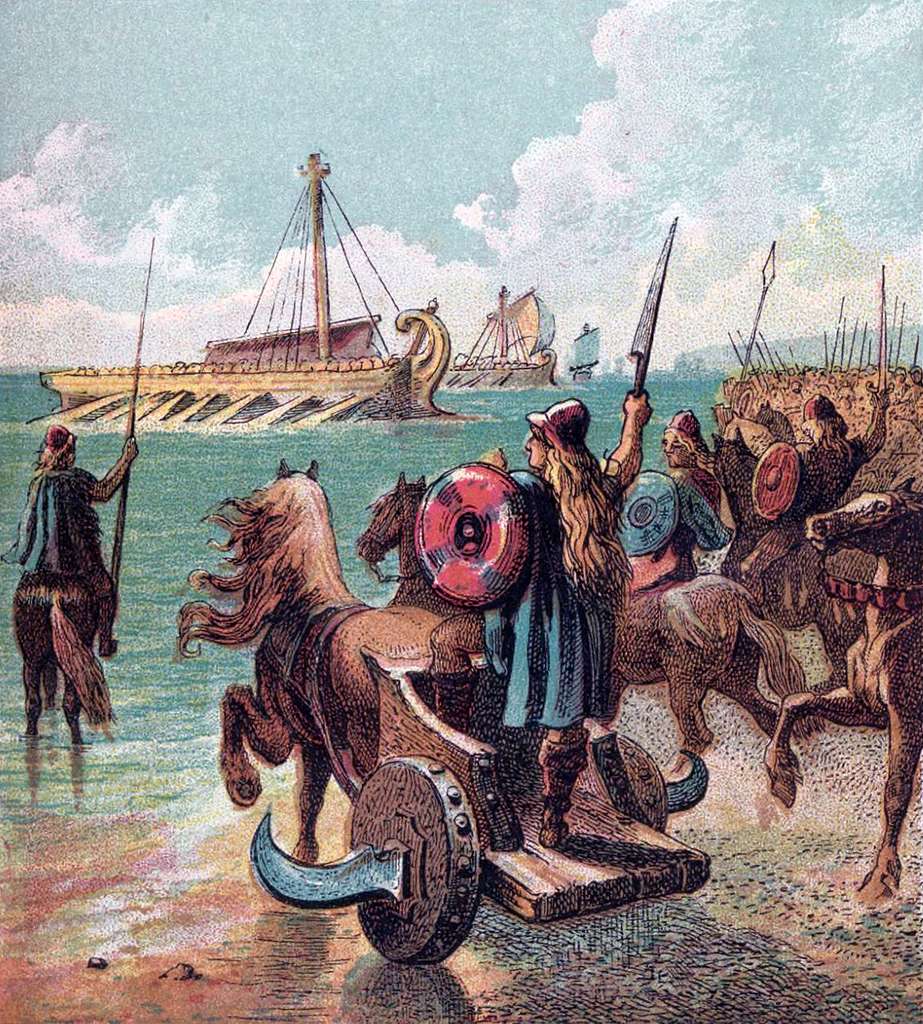
The Roman Occupation of Britain from Celtic Briton Perspective: Colonization and Loss of Native Traditions
For the Celtic Britons, the Roman occupation was a double-edged sword. On one hand, the Romans brought with them technological advancements, improved infrastructure, and new trade opportunities. Some Britons even adopted Roman lifestyles, enjoying the luxuries of Roman baths and villas.
Yet, the cost was significant. The Romans, in their quest to “civilize”, often suppressed native traditions and practices. Sacred groves were cut down, and Druids, the spiritual leaders of the Celts, were persecuted. The imposition of Roman laws and taxes, coupled with the forced conscription of Britons into the Roman army, led to feelings of resentment and loss of cultural identity.
The challenges from the Celtic perspective were rooted in this loss of autonomy. While the Roman infrastructure benefited the economy, it also facilitated the rapid movement of Roman legions, ensuring swift retaliation against any rebellion. The cultural assimilation, while enriching in some aspects, also meant that many Celtic traditions were overshadowed by Roman customs.
In Conclusion
The Roman Occupation of Britain was a complex interplay of conquest, resistance, assimilation, and cultural exchange. From the Roman perspective, they were the bearers of civilization to a distant, barbaric land. For the Celtic Britons, it was a period of both growth and loss, as they grappled with the realities of colonization and the erosion of their native traditions.
The Revolt of Boudicca: A Tale of Resistance during the Roman Occupation of Britain
In the annals of British history, few tales resonate as powerfully as the revolt led by Boudicca, the fierce Queen of the Iceni tribe. This story, set against the backdrop of the Roman Occupation of Britain, serves as a testament to the indomitable spirit of the Celtic Britons.
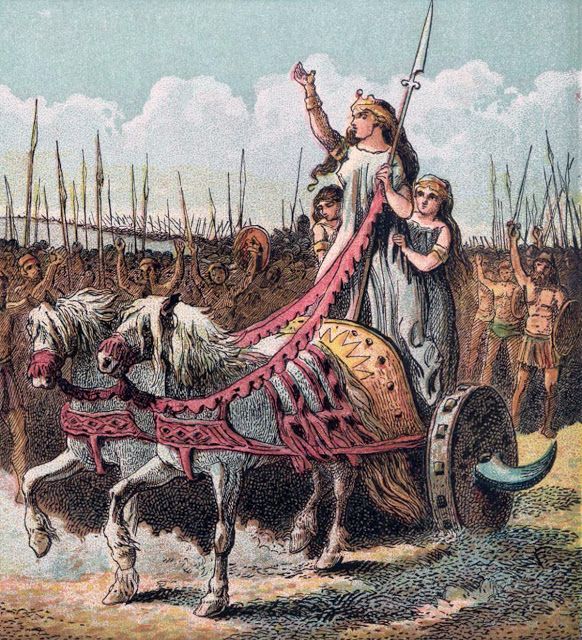
The Spark of Rebellion
The Iceni tribe, native to what is now modern-day Norfolk, initially coexisted with the Romans. However, upon the death of King Prasutagus, Boudicca’s husband, a series of grave injustices were inflicted upon the Iceni. The Romans, disregarding Prasutagus’s will, annexed his kingdom. Boudicca was flogged, and her daughters were assaulted. This brutal act was the spark that ignited a widespread revolt.
The Tide of War
Under Boudicca’s leadership, the Iceni, joined by other tribes, rose in rebellion in 60 AD. They employed guerrilla tactics, using their intimate knowledge of the local terrain to their advantage. The rebels achieved significant victories, notably sacking the Roman settlements of Camulodunum (modern-day Colchester), Londinium (London), and Verulamium (St Albans). The devastation was so extensive that archaeological evidence of the destruction can still be traced today.
The Final Battle
However, the might of the Roman Empire could not be underestimated. The Roman governor, Gaius Suetonius Paulinus, mustered his forces and confronted Boudicca’s army. In a fierce battle, the disciplined Roman legions managed to defeat the larger but less organized Briton force. Boudicca’s fate remains a mystery, with some sources suggesting she took her own life to avoid capture.
Hadrian’s Wall: The Roman Frontier in Britain
Nestled amidst the rolling hills and rugged landscapes of Northern England stands a testament to Roman engineering and the complexities of empire: Hadrian’s Wall. Constructed during the Roman Occupation of Britain, this monumental structure not only served as a physical barrier but also as a symbol of Roman power and determination.
The Emperor’s Vision
In 122 AD, Emperor Hadrian visited the province of Britannia. Concerned about the northern tribes and eager to consolidate and define the Roman frontier, he envisioned a wall. Stretching approximately 73 miles from the Solway Firth in the west to the River Tyne in the east, this wall was to be interspersed with forts, turrets, and milecastles.
More Than Just Stones
While the wall served a defensive purpose, it was also a statement of intent. It marked the boundary of the Roman world, separating the ‘civilized’ from the ‘barbarians’. Beyond its military function, the wall facilitated trade and controlled movement, with gates allowing passage to those with Roman permission.
The wall also became a hub of activity. Soldiers from across the Roman Empire, from North Africa to the Eastern provinces, were stationed here, leading to a melting pot of cultures. Towns and settlements, known as “vici”, sprouted around the forts, bustling with traders, artisans, and families of the soldiers.
Legacy in Stone
Though the Roman Empire eventually withdrew from Britain, Hadrian’s Wall endured. Today, it stands as a UNESCO World Heritage site, attracting visitors from around the world. Its ruins whisper tales of Roman legions, frontier life, and the ebb and flow of empires.
1. How did the Roman Occupation influence the religious practices of Britain?
Before the Roman Occupation, the religious landscape of Britain was dominated by Druidism and various Celtic deities. With the Romans came the pantheon of Roman gods, and over time, many Celtic deities were equated with Roman counterparts in a process known as “interpretatio Romana”. Temples in Roman style were constructed, and some Britons began to adopt Roman religious practices. Additionally, by the end of the Roman occupation, Christianity began to take root, leading to a significant religious transformation.
2. What economic changes did the Roman Occupation bring to Britain?
The Roman Occupation introduced a more complex and interconnected economic system to Britain. The Romans introduced coinage, enhancing trade both within Britain and with the broader Roman Empire. They exploited Britain’s mineral resources, especially tin, lead, and silver. The establishment of Roman-style towns and villas also led to the growth of urban centers and the spread of Roman agricultural practices.
3. How did the Roman Occupation impact the daily lives of ordinary Britons?
For many Britons, the Roman Occupation brought significant changes. The introduction of Roman law, language, and customs influenced daily activities and societal norms. Roman architectural innovations like villas, baths, and aqueducts changed the living standards for some. However, it’s essential to note that while urban centers saw rapid Romanization, many rural areas retained their traditional Celtic ways of life.
4. Were there any notable technological advancements introduced by the Romans in Britain?
Absolutely. The Romans introduced several technological marvels to Britain. Their road networks, like the famous Watling Street, revolutionized transportation. The construction of aqueducts improved water supply, and the establishment of Roman baths introduced new leisure and hygiene practices. Additionally, the Romans brought advanced agricultural tools and techniques, enhancing food production.
5. How did the end of the Roman Occupation affect Britain politically and socially?
The end of the Roman Occupation in 410 AD left a power vacuum in Britain. Without the centralized Roman administrative structure, various local chieftains and leaders vied for control. This period saw increased raids by external groups like the Picts, Scots, and Germanic tribes. The societal structure shifted, leading to the eventual establishment of several Anglo-Saxon kingdoms, marking the beginning of the Early Medieval period in Britain.
